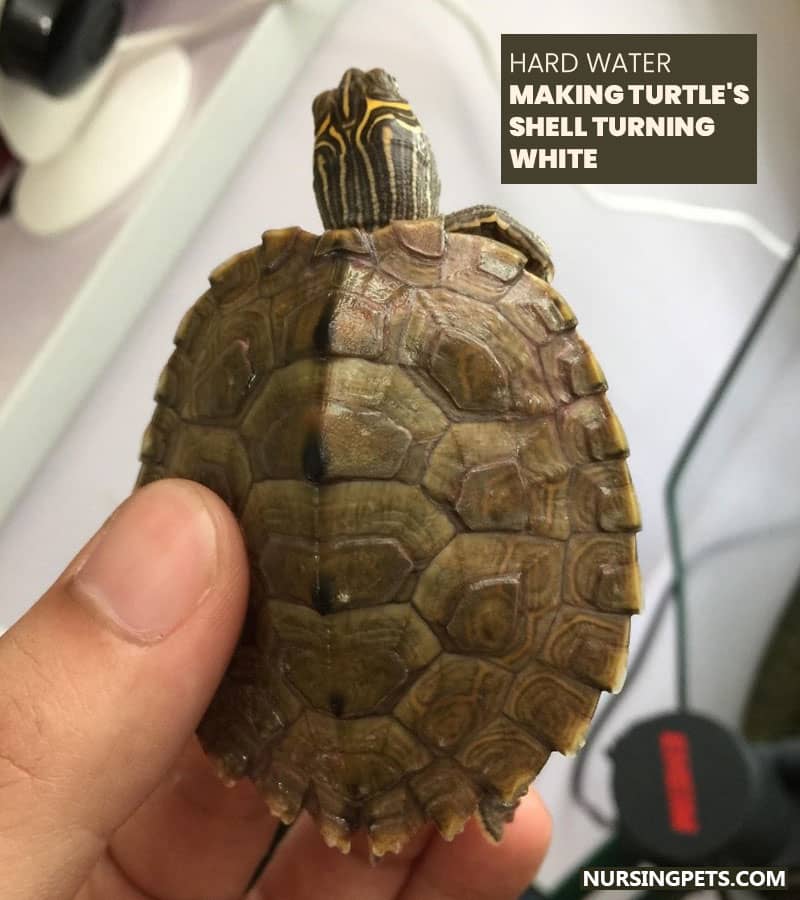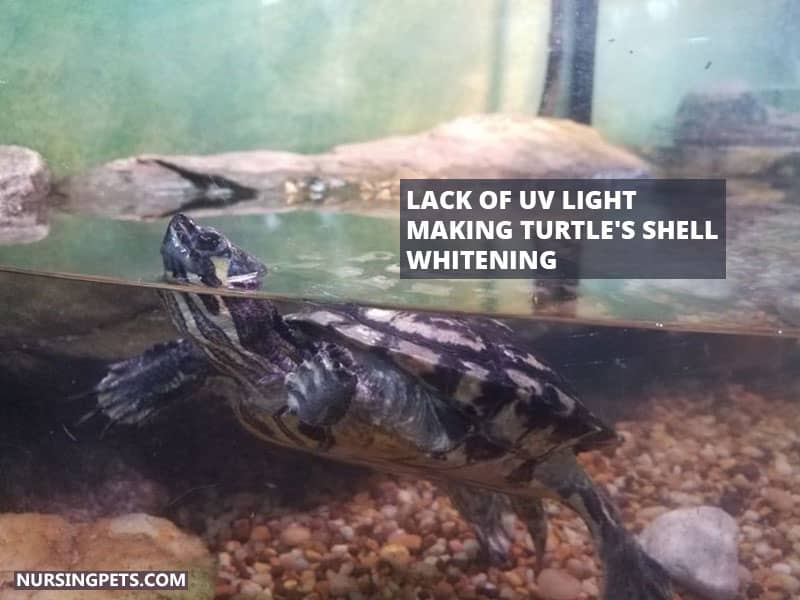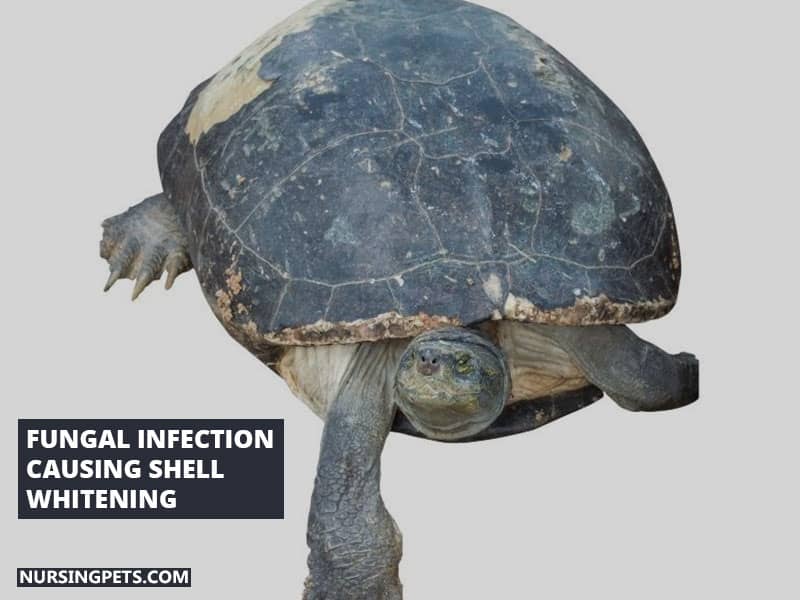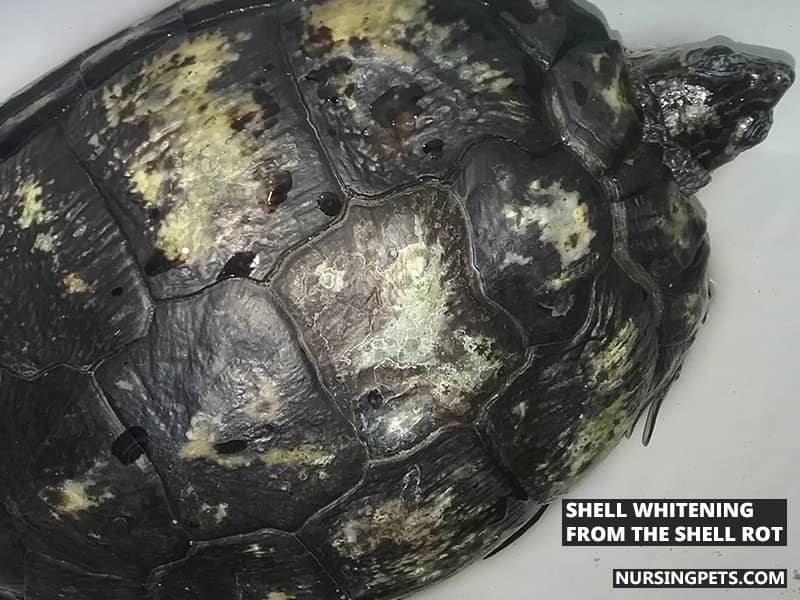Why Is My Turtle’s Shell Turning White?
Many people find it a mystery – why their turtles’ shells turn white. Although this is a natural process, there are many reasons out there that can cause it too. Now, you might be wondering, why is my turtle’s shell turning white?
The most common causes of a turtle’s shell turning white are lack of UVB light, too much calcium in the water, too little vitamin A, fungal infection, or if your turtle spend too much time in the water can also cause the shell whitening.
And don’t worry about it. It’s nothing serious most of the time, and you can easily prevent it. In today’s blog, we will discuss this turtle shell whitening problem in detail and the possible solutions.
Related Blog:
All the Reasons Behind the Turtle’s White Shell
01. Hard Water Making Turtle’s Shell Turning White
Hard water is the most common reason for a turtle’s shell whitening. Usually, it looks like an evenly coated white color or the bottom half of the shell has coated white portion. And normally, it seems powdery or chalky. And you can wipe it off easily.
It could also look like small white spots around different shell parts if it’s from hard water. However, if you can remove or wipe it off by rubbing or scrubbing, it’s definitely because of the hard water.

Another way to confirm it is by using plain white vinegar on the affected area. And if it fizzes after using it, it’s definitely due to calcium carbonate and magnesium. Hence, it’s a hard water problem.
You can find the trace of hard water or the trace of water minerals left on things like bathtubs, sinks, shower faucets, glass, etc. Turtle’s shell whitening could be for the same reason too.
#How to Treat Turtles Shell whitening from Hard Water
Using plain white vinegar on the affected areas can easily solve this problem. However, you have to be extremely careful while applying it to your turtle. A little contact with the eyes or ears can cause a lot of pain for your pet friend.
But the good news is, if the shell whitening is from hard water, there’s no negative health effect from it.
02. Lack of UV Light Making Turtle’s Shell Whitening
Another reason that can cause your turtle’s shell whitening is the lack of UV-B light. We’re not talking about becoming dull (it’s a natural process). The color of your turtle’s shell will fade and become greyish or white.

That is because the turtle isn’t getting enough light, or the basking area doesn’t have access to strong light. And your turtle spends too much time in the water without proper light.
#How to Treat Shell Whitening from Low Light
Increase the light access or use more powerful light in the basking area. If you’re looking for a good UV light for your pet turtle, here’s our recommended one you can check. It’s a reptile lighting kit you can use for your turtle tank.
03. Fungal Infection Causing Shell Whitening
Fungal infection is different from the previous two. It looks brighter and denser white spots on the turtle’s shell. It will be like a moldy cheese substance on the turtle’s shell or skin if it’s a fungal infection.
The color could vary from white to grey fuzzy or green raised patches spots. It’ll grow faster and make the shell rot gradually. There could also be holes or pits in those white spots and smell awful.

Turtle’s fungal infection because of poor water quality or a bad basking spot are the main reasons for fungal attack. If you feed the turtle inside the tank, the basking spot or the tank’s lack of light could cause the infection.
Wasted foods can cause bacteria to breed in the tank, and the warmer temperature can nurture those to spread more.
#How to Treat Fungal Infection
It’ll take more time and effort to prevent fungal infection. It’s better to take a few steps before the infection becomes serious. Here’s how you can do it:
- Keep the turtle out of the tank for more time, and put it under the sun.
- Clean the tank thoroughly.
- Put 2 tablespoons of salt in the warm water.
- Let your turtle soak in the water for at least 15 minutes.
- Do it 2-3 times for around consecutive 7 days.
- And always try to keep the turtle dry.
If the infection becomes more serious, please visit the nearest vet to treat it correctly. You can find a few more solutions online, but it’s best to visit and consult with a professional.
04. Shell Whitening from the Shell Rot
There’s another reason which could be causing shell whitening. It’s from shell rot. It just looks similar to white spots appearing on the shell. Bits and pieces of shell could fall off too.

Bits of flesh could be exposed due to scute fall off. Also, it’ll smell really bad from those places, and fluids could be leaking from those areas.
The usual reasons behind the shell rot are – not having a proper heating system, having less access to light or sun, having a bad diet, injury, poor sanitary condition, and too much moisture in the tank.
#How to Treat Shell Rot
Well, you don’t need to be scared; shell rot is a serious problem. But you could easily prevent it by taking a few steps. Have the proper lighting and diet, treat the injury carefully, let the turtle spend more time under the sun.
And there’re a few things you can do to treat it if it becomes serious. However, we don’t recommend you to do it on your own as your little mistake can cause your turtle to die. So, you better see a professional vet and analyze it thoroughly.
Summary
Turtle’s shell whitening can be for several reasons, which can be from simple hard water to shell rot, except for shell rotting, other forms of shell whitening you can treat from home.
But if it is serious, it’s better to see a professional near your home as it can be caused by several reasons and in different states. Hence the treatment will vary accordingly. If it’s simple and you’re confident about yourself, you can follow our guidelines too.
Image Source:
- Canva.com/photos
- turtleforum.com
- Canva.com/photos
- Canva.com/photos
- turtleforum.com

